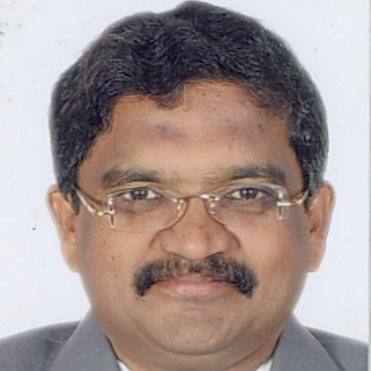International Journal of Information Technology and Computer Science (IJITCS)
IJITCS Vol. 4, No. 5, 8 May 2012
Cover page and Table of Contents: PDF (size: 321KB)
Survey on an Efficient Coverage and Connectivity of Wireless Sensor Networks using Intelligent Algorithms
Full Text (PDF, 321KB), PP.39-45
Views: 0 Downloads: 0
Author(s)
Index Terms
Connectivity, Coverage, SOGA, MOGA, SPEA, Clustering
Abstract
Wireless sensor networks are often deployed for data-gathering or monitoring in a geographical region. This paper explains an important issue to maintain the fidelity of the sensed data while minimizing energy usage in the network. Nature inspired computation like evolutionary computation, swarm intelligence etc., which offers practical advantages to the researcher facing difficult optimization problems. The genetic algorithms are used for efficient connectivity and coverage. Single Objective Genetic Algorithms (SOGA) method is used to yield good results in terms of Coverage, but the objective’s graph had shown Pareto optimal designs with differing Endurance. However it is attractive to offer Pareto optimal designs to a user willing to settle for a poorer Coverage in order to gain in Endurance, so that the sensor network lasts longer. This explains concept of Multiple Objective Genetic Algorithm (MOGA) and its implementation and results which are compared to those of the SOGA. Endurance and Robustness to deployment inaccuracy tend to work in the same direction. A MOGA was conducted with the Coverage and Robustness as objectives. The main objective of this paper is to propose new Strength Perito Evolutionary Algorithm (SPEA) method along with clustering, this will reduce the distances between the sensor nodes that increase the efficiency of the nodes and also increase the connectivity. This will increase lifetime of sensors and connectivity.
Cite This Paper
M.Siddappa, Channakrishna raju, "Survey on an Efficient Coverage and Connectivity of Wireless Sensor Networks using Intelligent Algorithms", International Journal of Information Technology and Computer Science(IJITCS), vol.4, no.5, pp.39-45, 2012. DOI:10.5815/ijitcs.2012.05.06
Reference
[1]I.F. Akyildiz, W. Su, Y. Sankarasubramaniam, E. Cayirci, Wireless sensor networks: a survey, Computer Networks 38 (4) (2002) 393–422.
[2]B. Badrinath, J. Scholtz, M. Srivastava, K. Mills, V. Stanford, IEEE, IEEE Personal Communication, 2000 (Special issue on smart spaces and environments
[3]D. Li, K.D. Wong, Y.H. Hu, A.M. Sayeed, Detection, classification, and tracking of targets, IEEE Signal Processing Magazine 19 (2002) 17–29.
[4]P. Varshney, Distributed detection and data fusion, Springer-Verlag, 1996
[5]M. Cardei, J. Wu, Energy-efficient coverage problems in wireless ad-hoc sensor networks, Computer Communications 29 (2006) .413–420.
[6]S. Slijepcevic, M. Potkonjak, Power efficient organization of wireless sensor networks, in: Proceedings of the IEEE international conference on communications, vol. 2, 2001, pp. 472–476.
[7]C.C. Lai, C.K. Ting, R.S. Ko, An effective genetic algorithm to improve wireless sensor network lifetime for large-scale surveillance applications, in: Proceedings of the 2007 Congress on Evolutionary Computation, 2007, pp. 3531–3538
[8]DAMIEN JOURDAN ,”Node placement for a wireless sensor network using a multi objective genetic algorithm.
[9]M. Cardei, D.Z. Du, Improving wireless sensor network lifetime through power aware organization, Wireless Networks 11 (3) (2005) 333–340
[10]Zhang. B.S. Lee, X.S. Wang, Aggregation in sensor networks with a user-provided quality of service goal, Information Sciences 178 (9) (2008) 2128–2149
[11]L. Krishnamachari, D. Estrin, S. Wicker, The impact of data aggregation in wireless sensor networks, in: Proceedings of the 22nd International Conference on Distributed Computing Systems Workshop, 2002, pp. 575–578, 2002
[12]W.R. Heinzelman, A. Chandrakasan, H. Balakrishnan, Energy-efficient communication protocol for wireless microsensor networks, in: Proceedings of the 33rd Annual Hawaii International Conference on System Sciences, 2000, pp. 1–10.
[13]C. Ok, S. Lee, P. Mitra, S. Kumara, Distributed routing in wireless sensor networks using energy welfare metric, Information Sciences 180 (9) (2010) 1656–1670
[14]F. Marcelloni, M. Vecchio, Enabling energy-efficient and lossy-aware data compression in wireless sensor networks by multi-objective evolutionary optimization, Information Sciences 180 (10) (2010) 1924–1941.
[15]S. Meguerdichian and M. Potkonjak, “Low power 0/1 coverage and scheduling techniques in sensor networks,” Tech. Rep. 030001, University of California at Los Angles, January 2003.
[16]D. Tian and N. D. Georganas, “A coverage-preserving node scheduling scheme for large wireless sensor networks,” in WSNA ’02: Proceedings of the 1st ACM international workshop on Wireless sensor networks and applications. New York, NY,USA: ACM, 2002, pp. 32–41.
[17]G. Xing, X. Wang, Y. Zhang, C. Lu, R. Pless , and C. Gill, “Integrated coverage and connectivity configuration for energy conservation in sensor networks,” ACM Trans. Sen. Netw., vol. 1, no. 1, pp. 36–72, 2000
[18]F. Ye, G. Zhong, J. Cheng, S. Lu, and L. Zhang, “Peas: A robust energy conserving protocol for long-lived sensor networks,” in ICDCS ’03: Proceedings of the 23rd International Conference on Distributed Computing Systems. Washington, DC, USA: IEEE Computer Society, 2003, p. 28
[19]N. Chaiyarataiia and A. M. S. Zalzala, “Recent Developments in Evolutionary and Genetic Algorithms: Theory and Applications”, Genetic Algorithms in Engineering Systems: Innovations and Applications, 2-4September 1997
[20]Zitzler E, Thiele L. Multi objective evolutionary algorithms: a comparative case study and the strength Pareto approach. IEEE Trans Evol Comput 1999;3(4):257–71.
[21]Deb K. Multi-objective optimization using evolutionary algorithms. New York: Wiley; 2001.
[22]Van Veldhuizen DA, Lamont GB. Multi objective evolutionary algorithms: analyzing the state-of-the-art. Evol Comput 2000;8(2): 125–47.
[23]Zitzler E, Thiele L. Multiobjective evolutionary algorithms: a comparative case study and the strength Pareto approach. IEEETrans Evol Comput 1999;3(4):257–71.
[24]Morse JN. Reducing the size of the nondominated set: pruning by clustering. Comput Oper Res 1980;7(1–2):55–66.

